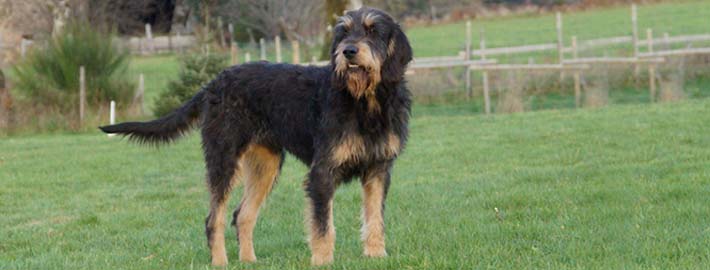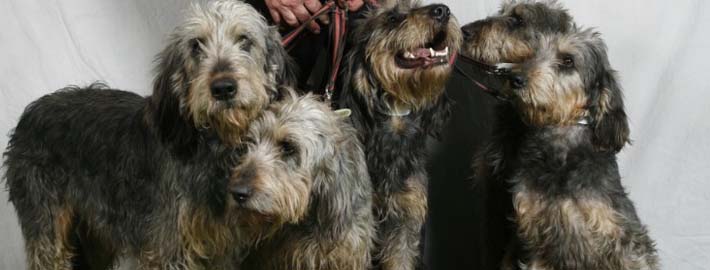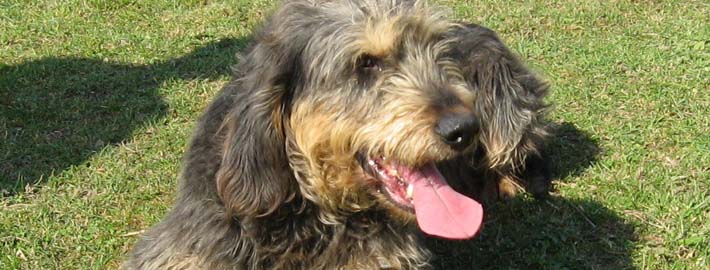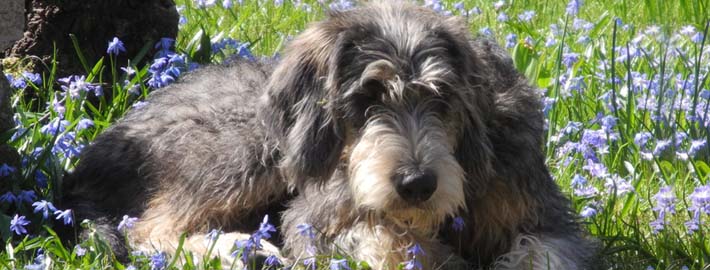What makes the Griffon Nivernais Unique?
A versatile hunter and friendly companion, the Griffon Nivernais is making a comeback in its homeland.
Breed Groups
Page Contents
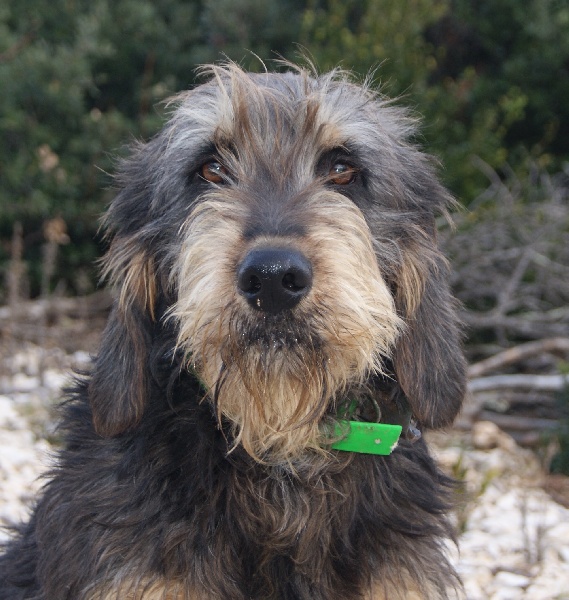
SnapShot
| Size: | Males – 48 to 56 cm (19 to 22 inches) Females – 46 to 53 cm (18 to 21 inches) |
| Weight: | Males – 22.6 to 25 kg (50 to 55 pounds) Females – 22.6 to 25 kg (50 to 55 pounds) |
| Origin: | France |
| Life Span: | 10– 14 Years |
| Colour: | Black & Brown, Dark Brown / Chocolate, Gray / Salt & Pepper, Light Brown / Golden |
| Litter Size: | 1 to 6 puppies |
Is the Griffon Nivernais Right For You?
Despite the fact that they are intrepid hunters, these medium-sized dogs are, in fact, exceptionally friendly individuals. Although they get along just fine with human beings of all ages, including strangers, members of this breed will do best in households that contain older children. Since they were bred to work as part of a team that included other dogs, a Griffon Nivernais will usually have no difficulties when it comes to sharing a house with other canines. Those that grow up around cats should have no problem with them but, for the most part, a Griffon Nivernais will probably view smaller animals as prey.
In 5 Words
- Rustic
- Affectionate
- Friendly
- Loving
- Stubborn
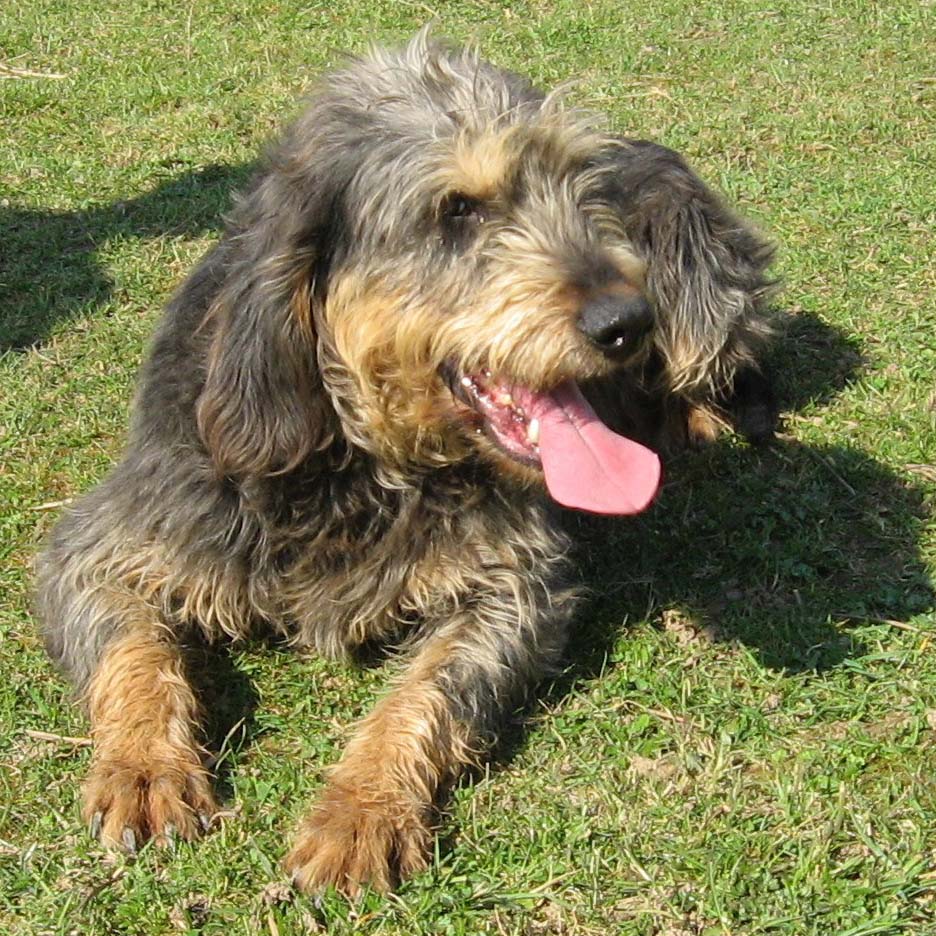
Characteristics
Learn About the Griffon Nivernais
Description
General Description
These shaggy dogs have a sturdy, rectangular body structure that enables them to successfully hunt through tangled thickets and over rough terrain. Members of the Griffon Nivernais breed are also quite courageous. In packs, they can easily take on wild boars and other large animals. These individuals summarily tend to excel at various forms of dog sports. Members of this breed have wide chests, long heads, flat skulls, and tapered muzzles. These dogs additionally possess either light or dark eyes and black noses. Due to their history as a hunting breed, Griffon Nivernais dogs have a keen sense of smell. They also have long ears that hang beside their heads and that can touch the tips of their noses when stretched outward. Members of this breed likewise possess lengthy, high-set tails that are a bit curved.
Size
Members of this breed are of a moderate size. They typically stand between 22 and 24 inches (55 and 60 centimeters) in height.
Coat
Griffon Nivernais dogs have coarse coats which are typically grey in color, with the fur starting off dark at the roots and fading to a lighter shade at the tips. White hairs are often interspersed with the grey ones. However, fawn or sable animals are also available. These dogs tend have coats that are blended with either blue or black hairs rather than white ones. Some individuals may additionally have white markings on their chests.
Short History of the Griffon Nivernais
These French scent hounds were recreated to resemble hunting dogs from the Middle Ages yet they are much smaller than the earlier versions happened to be. The original dogs were used for hunting wild boars and wolves but vanished during the country’s revolutionary years. Around 1925, breed aficionados brought the Griffon Nivernais, or the Chien de Pays, back from extinction using a combination of Grand Griffon Vendeens, Otterhounds, and Foxhounds. Currently, the breed is recognized by the Fédération Cynologique Internationale (FCI) and the United Kennel Club (UKC), but not the American Kennel Club (AKC).
Temperament
Griffon Nivernais dogs were bred to hunt wild animals in large packs, a role that they fulfil most admirably to this very day. Despite the fact that they are intrepid hunters, these medium-sized dogs are, in fact, exceptionally friendly individuals. Although they get along just fine with human beings of all ages, including strangers, members of this breed will do best in households that contain older children. Since they were bred to work as part of a team that included other dogs, a Griffon Nivernais will usually have no difficulties when it comes to sharing a house with other canines. Those that grow up around cats should have no problem with them but, for the most part, a Griffon Nivernais will probably view smaller animals as prey.
These dogs will definitely need obedience training and proper socialization from an early age to ensure that they know how to behave in society. However, Griffon Nivernais dogs can be quite stubborn individuals and may prove difficult to train. Members of this breed also like to bark and can be quite loud in doing so. While this habit is beneficial for dogs that are serving as hunters and estate guardians, it generally frowned upon in areas where neighbors are close at hand. Therefore, prospective owners will want to avoid introducing members of this breed to city life.
Caring for Your Griffon Nivernais
General Health
Members of this breed are typically born in litters that contain anywhere from 1 to 6 puppies. On average, a Griffon Nivernais will usually live for about 12 years. This breed is not known for its’ poor health but neither are the dogs known to have exceptionally good health. Progressive retinal atrophy and hip dysplasia in particular tend to trouble Griffon Nivernais dogs but these two ailments are frequently seen in a wide variety of breeds.
Care
Daily
Regular workout sessions are a must for all dogs, especially this energetic breed.
Weekly
Brushing your pet’s teeth a few times per week, if not every day, is highly recommended to keep pets in good oral health. Grooming your dog at least once a week will also help remove loose bits of fur and help keep it from getting everywhere.
Monthly
All dogs need parasite prevention medications to keep harmful pests at bay. Most of these products should be administered at least once a month in order to work properly.
Grooming & Bathing
Griffon Nivernais dogs do not have extensive grooming needs. In fact, these individuals should be bathed only if they become especially dirty or if they happen to encounter a skunk. This is because washing the dogs too much will remove the barrier of protective oils on their coat that helps them stay warm in inclement weather. Owners will nonetheless need to keep their dog’s toenails trimmed in order to prevent otherwise avoidable injuries. It is likewise recommended that Griffon Nivernais dogs have their ears cleaned on a regular basis to keep these appendages free of dirt and debris, especially if the animal in question has recently gone hunting.
Exercise & Training
Given their incredibly active natures and their penchant for barking incessantly, these dogs are obviously not recommended for apartment life. A Griffon Nivernais needs to live somewhere with access to large, open spaces where he or she can run about and play on daily basis. It goes without saying that these dogs are at their best in rural environments.
Due to their stubborn natures, members of this breed can prove difficult to train in spite of their high levels of intelligence. People who own members of this breed will need to have good leadership skills that enable them to earn the respect of the animal in question. Otherwise their pets may take advantage of the situation and continue to do whatever they please. As is the case with many breeds, a firm hand and consistent rules are required when training these dogs. However, a Griffon Nivernais that is meant to become a hunting dog will need to be taught by professionals. It will also need to begin its lessons when it is between the ages of three and four months old.

